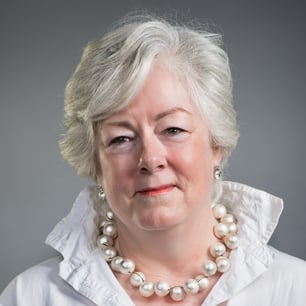New Metrics for New Models: Measuring the Success of Shared Leadership
Big Ideas | How We Work | People Operations | Board of Directors
Since we embarked on our new leadership journey, I (in my role as Chair of the Fractured Atlas Board) have been asked a number of times “Why take the risk?” As Fractured Atlas is in the risk business with regard to innovation and services for our members, the better question to me is why not take the risk – it's what we do. This brief post is an outline of the benefits thus far, as well as an honest admission about what we still haven’t figured out. (My fellow board member Chris Mackie will be writing on the detailed list of what we have yet to resolve and design – this will be a quick pass in anticipation of his contribution which is coming soon.)
Preparing for Shared Leadership
When we first reviewed this proposal from the leadership team, we were in a familiar spot: our successful founder was moving on after many years and the board had largely been recruited by him. Our way of working as a board was intellectually stimulating but not onerous, and had a high polite norm – we like each other and learn from each other and have benefited from an extraordinarily competent and intelligent staff.
This founder transition meant that we had to re-examine our role in governing, and also look to hold onto that talent – it wasn’t the founder alone who made Fractured Atlas a success and we didn’t want to parachute in a new CEO as we had such a terrific team. In creating a new structure, we were very aware of the many possible problems which FA’s Chief Operating Officer Tim Cynova summarizes so clearly in his very enjoyable blog. As the current Chair, I was also extremely mindful of the question raised in his writing:
Can this be accomplished without creating a “first among equals” on the team, or accidentally making the Board Chair the de facto CEO of the organization?
Measuring the Success of Shared Leadership
We also started thinking about how we would assess the performance of the four rather than a single leader, and very quickly found an outside expert to help us do this. Kelly Kienzle helped design a new process for us that was invaluable for the Leadership Team and the board -- you can find out a lot more about this thinking including the mechanics and the thinking behind them here.
So, as a board we adopted this model for three main reasons:
- talent retention,
- achieving real diversity of viewpoint at the top level of Fractured Atlas, and
- experimentation on a model that would align more closely with our commitment to anti-racism and anti-oppression.
Reflecting on Shared Leadership
Speaking as a former CEO, the model is ultimately the most attractive because it addresses unexamined and often unrealistic assumptions about what any single CEO is able to achieve. This structure appealed to me because it is an inherently honest manifestation of how work is actually achieved within organizations, and an immunization against the “lone hero myth” that results in so many unwise CEO appointments.
In America, in particular, popular culture has lulled us into very specific (and often stereotypical) ideas about what heroes are supposed to look like, and those subconscious memes are all too often white, male and of a certain age and temperament. This model encourages our imagination about what leaders can look like – and is a constant reminder of the complexity of the leadership task.
It’s risky but honest, and that too is what we do at Fractured Atlas.
If you're interested in learning more about our #HowWeWork and shared leadership, check our some of our other blogs on the topic.
About Russell Willis Taylor
Russell has held a variety of senior jobs including Managing Director of the English National Opera in London, President and CEO of National Arts Strategies in Washington DC, and Interim Vice President of Leadership and Arts at the Banff Centre in Canada. Currently working as a strategic consultant, she is a Fellow of the Royal Society of Arts and serves on the Alyth Development Trust, Hospitalfield Trust, and as Chair of Fractured Atlas. Russell was honored with the International Citation of Merit by the International Society for the Performing Arts, presented in recognition of her lifetime achievement and her distinguished service to the performing arts. She has written a number of articles on arts and nonprofit management and policy issues in arts, society and culture, as well as a book on fundraising for museums commissioned by the British Government. She and her husband have recently moved to Alyth in Perthshire, Scotland and are restoring a Victorian house and its gardens.
.jpg)

